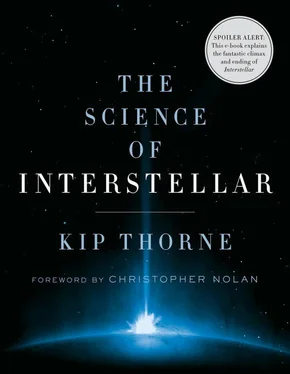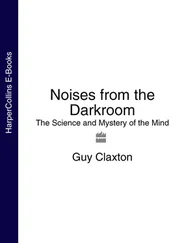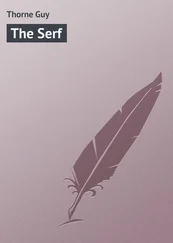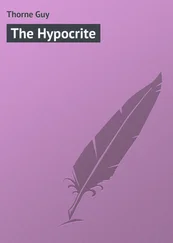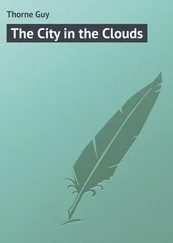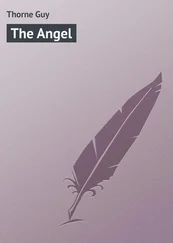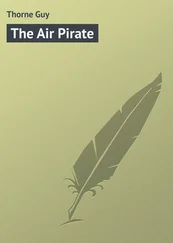What Does a Traversable Wormhole Look Like?

What does a traversable wormhole look like to people like us who live in our universe? I can’t answer definitively. If a wormhole can be held open, the precise details of how remain a mystery, so the precise details of the wormhole’s shape are unknown. For black holes, by contrast, Roy Kerr has given us the precise details, so I can make the firm predictions described in Chapter 8.
So for wormholes, I can make only an educated guess, but one in which I have considerable confidence. Hence the symbol  on this section’s header.
on this section’s header.
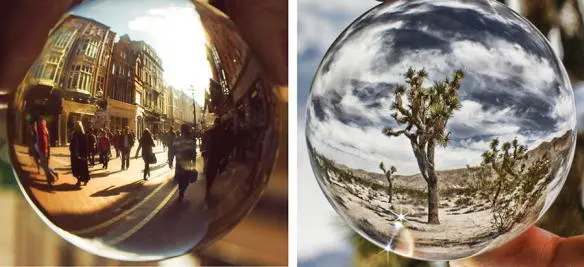
Mouth in California Desert | Mouth in Dublin
Fig. 14.6. The images seen through a wormhole’s two mouths. [Left photo by Catherine MacBride; right photo by Mark Interrante.]
Imagine we have a wormhole here on Earth, stretching through the bulk from Grafton Street in Dublin, Ireland, to the desert in Southern California. The distance through the wormhole might be only a few meters.
The entrances to the wormhole are called “mouths.” You are sitting in a sidewalk cafe alongside the Dublin mouth. I am standing in the desert beside the California mouth. Both mouths look rather like crystal balls. When I look into my California mouth, I see a distorted image of Grafton Street, Dublin (Figure 14.6). That image is brought to me by light that travels through the wormhole from Dublin to California, rather like light traveling through an optical fiber. When you look into your Dublin mouth, you see a distorted image of Joshua trees (cactus trees) in the California desert.
Can Wormholes Exist Naturally, as Astrophysical Objects?

In Interstellar , Cooper says, “A wormhole isn’t a naturally occurring phenomenon.” I agree with him completely! If traversable wormholes are allowed by the laws of physics, I think it extremely unlikely they can exist naturally, in the real universe. I must confess, though, that this is little more than a speculation, not even an educated guess. Maybe a highly educated speculation, but speculation nonetheless, so I labeled this section  .
.
Why am I so pessimistic about natural wormholes?
We see no objects in our universe that could become wormholes as they age. By contrast, astronomers see huge numbers of massive stars that will collapse to form black holes when they have exhausted their nuclear fuel.
On the other hand, there is reason to hope that wormholes do exist naturally on submicroscopic scales in the form of “quantum foam” (Figure 14.7). This foam is a hypothesized network of wormholes that is continually fluctuating in and out of existence in a manner governed by the ill-understood laws of quantum gravity (Chapter 26). The foam is probabilistic in the sense that, at any moment, there is a certain probability the foam has one form and also a probability that it has another form, and these probabilities are continually changing. And the foam is truly tiny: the typical length of a wormhole would be the so-called Planck length, 0.000000000000000000000000000000001 centimeters; a hundredth of a billionth of a billionth the size of the nucleus of an atom. That’s small!!
Back in the 1950s John Wheeler gave persuasive arguments for quantum foam, but there is now evidence that the laws of quantum gravity might suppress the foam and might even prevent it from arising.
If quantum foam does exist, I hope there is a natural process by which some of its wormholes can spontaneously grow to human size or bigger, and even did so during the extremely rapid “inflationary” expansion of the universe, when the universe was very, very young. However, we physicists have no hint of any evidence at all that such natural enlargement can or did occur.
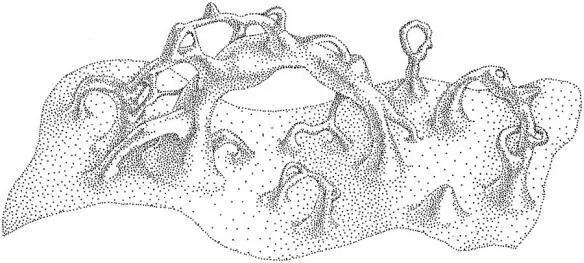
Fig. 14.7. Quantum foam. [Drawing by Matt Zimet based on a sketch by me; from my book Black Holes & Time Warps: Einstein’s Outrageous Legacy .]
The other tiny hope for natural wormholes is the big bang creation of the universe. It is conceivable, but very unlikely, that traversable wormholes could have formed in the big bang itself. Conceivable for the simple reason that we don’t understand the big bang well at all. Unlikely because nothing we do know about the big bang gives any hint that traversable wormholes might form there.
Can Wormholes Be Created by an Ultra-Advanced Civilization?

An ultra-advanced civilization is my only serious hope for making traversable wormholes. But it would face huge obstacles, so I’m pessimistic.
One way to make a wormhole, where previously there were none, is to extract it from the quantum foam (if the foam exists), enlarge it to human size or larger, and thread it with exotic matter to hold it open. This seems like a pretty tall order, even for an ultra-advanced civilization, but perhaps only because we don’t understand the quantum gravity laws that control the foam, the extraction, and the earliest stages of enlargement (Chapter 26). Of course, we don’t understand exotic matter very well either.
At first sight, making a wormhole seems easy (Figure 14.8). Just push a piece of our brane (our universe) downward in the bulk to create a thimble, fold our brane around in the bulk, tear a hole in our brane just below the thimble, tear a hole in the thimble itself, and sew the tears together. Just!
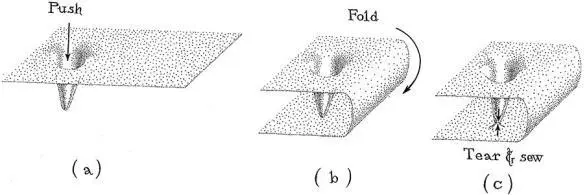
Fig. 14.8. Creating a wormhole. [Drawing by Matt Zimet based on a sketch by me; from my book Black Holes & Time Warps: Einstein’s Outrageous Legacy .]
In Interstellar, Romilly demonstrates the same thing with a sheet of paper and a pencil (Figure 14.9). As easy as this may look from the outside, playing with pencils and paper, it is horrendously daunting when the sheet is our brane and these manipulations must be carried out from within the brane, by a civilization that lives in our brane. In fact, I have no idea how to execute any of these maneuvers from inside our brane except the first, creating a thimble in our brane (which requires only a very dense mass, such as a neutron star). Moreover, if it is possible at all to tear holes in our brane, it can only be done with the help of the laws of quantum gravity. Einstein’s relativistic laws forbid tearing our brane, so the only hope is to make the tear where his laws fail, in a realm of quantum gravity. We then are back to the domain of terra almost incognita (Figure 3.2).
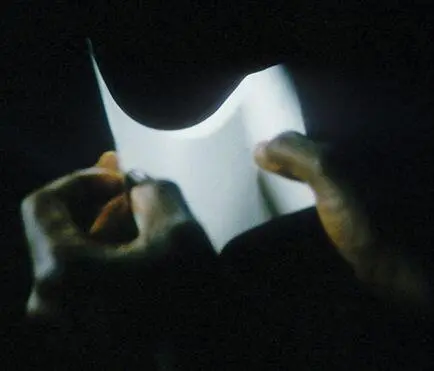
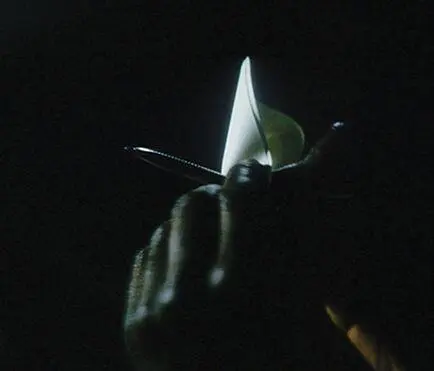
Fig. 14.9. Romilly explaining wormholes. Left : He bends a sheet of paper. Right : He punches a pencil (the wormhole) through the paper, joining its two edges. [From Interstellar , used courtesy of Warner Bros. Entertainment Inc.]
Читать дальше
